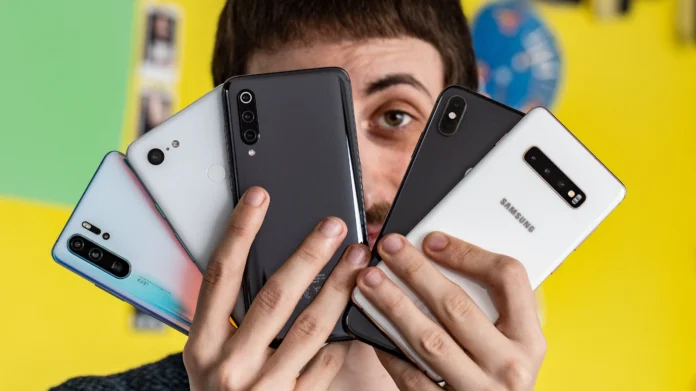Buying your first smartphone can be an exciting yet overwhelming experience. With countless brands, models, and features available in the market, choosing the right smartphone requires careful consideration. A smartphone is more than just a device for making calls; it’s a gateway to communication, productivity, entertainment, and much more. To make an informed decision, you need to evaluate your needs, budget, and preferences.
This guide will outline essential guidelines to help you choose your first smartphone wisely.
1. Determine Your Budget
The first and most crucial step in buying a smartphone is setting a budget. Smartphones are available in various price ranges, from budget-friendly models to premium devices with cutting-edge features. Your budget will dictate the type of smartphone you can afford, narrowing down your choices.
- Budget smartphones: Cost-effective devices offering basic features, typically priced under $300.
- Mid-range smartphones: Offer better performance and additional features, ranging from $300 to $700.
- Flagship smartphones: High-end devices with premium features and performance, priced above $700.
2. Identify Your Needs
Understand what you want from your smartphone. Your usage habits and lifestyle will determine the type of device that suits you best. Consider the following factors:
- Primary Use: Will you use it mainly for calls and texting, or do you need advanced features like gaming, photography, or video editing?
- Battery Life: For heavy users, a smartphone with long battery life is essential.
- Storage Requirements: Decide how much storage you need for apps, photos, and videos. Many smartphones offer 64GB to 512GB of storage.
3. Choose an Operating System
The operating system (OS) is the backbone of your smartphone. The two most popular options are Android and iOS, each with its strengths and limitations:
- Android: Offers a wide range of devices from various manufacturers like Samsung, Google, and Xiaomi. It’s highly customizable and supports diverse hardware options.
- iOS: Found exclusively on Apple’s iPhones, iOS is known for its seamless ecosystem, regular updates, and user-friendly interface.
Choose an OS based on your preferences and familiarity. For example, if you already own an iPad or MacBook, an iPhone might be more suitable due to Apple’s ecosystem integration.
4. Consider the Display
The display is one of the most important features of a smartphone, as it impacts your viewing experience. Pay attention to these aspects:
- Size: Choose a size that fits comfortably in your hand and pocket. Smartphones generally range from 5 to 7 inches in screen size.
- Resolution: Look for a high-resolution display (Full HD or above) for better clarity. AMOLED and OLED screens provide vibrant colors and deeper blacks compared to LCD screens.
- Refresh Rate: A higher refresh rate (90Hz or 120Hz) ensures smoother scrolling and better gaming performance.
5. Evaluate the Camera System
Smartphone cameras have become a key selling point for many users. If photography is important to you, consider the following:
- Megapixel Count: While important, megapixels are not the only factor determining camera quality. Look for features like aperture size, optical image stabilization, and night mode.
- Camera Setup: Many smartphones offer multiple lenses, including wide-angle, ultra-wide, macro, and telephoto. Determine what suits your photography style.
- Front Camera: Selfie enthusiasts should check the front camera specifications and features like portrait mode.
6. Check Performance and Specifications
The performance of a smartphone depends on its processor, RAM, and other hardware components. Ensure the device can handle your intended tasks smoothly:
- Processor: Look for a powerful chipset. For example, Qualcomm Snapdragon and Apple’s A-series processors are known for their high performance.
- RAM: For everyday use, 4GB to 6GB of RAM is sufficient. Gamers and multitaskers may require 8GB or more.
- Storage: Opt for a smartphone with expandable storage or sufficient internal memory to accommodate your needs.
7. Assess Battery Life and Charging
Battery life is critical, especially if you’re always on the go. Key factors to consider include:
- Battery Capacity: Look for smartphones with a battery capacity of at least 4,000mAh for a full day of use.
- Charging Speed: Fast charging is a convenient feature for quickly recharging your device. Wireless charging is another bonus feature to consider.
8. Evaluate Connectivity Options
Modern smartphones offer various connectivity features. Ensure the device supports:
- 5G Compatibility: For faster internet speeds and future-proofing.
- Wi-Fi and Bluetooth: Look for the latest standards (e.g., Wi-Fi 6, Bluetooth 5.0) for better connectivity.
- NFC: Useful for contactless payments and file transfers.
9. Examine Build Quality and Design
The build quality of a smartphone affects its durability and aesthetics. Choose a design that appeals to you while being functional:
- Materials: Smartphones come in plastic, glass, or metal designs. Glass backs look premium but are more fragile.
- Water and Dust Resistance: Devices with an IP rating (e.g., IP68) are better protected against water and dust.
10. Research Brand and After-Sales Support
Not all smartphone brands offer the same level of quality and support. Consider factors like:
- Reputation: Choose brands known for reliability and quality, such as Apple, Samsung, or Google.
- Software Updates: Check how frequently the brand provides updates for its devices.
- Customer Support: Reliable customer service and warranty policies are essential for peace of mind.
11. Test Before Buying
If possible, visit a physical store to test the smartphone. Handling the device gives you a better sense of its size, weight, and features. Check the responsiveness of the touchscreen, camera performance, and overall user interface.
12. Consider Long-Term Value
Think about the longevity of your smartphone. Investing in a slightly more expensive device with better features and support can save money in the long run. Consider factors like software update policies and the availability of accessories.
13. Read Reviews and Compare
Before making a final decision, read expert and user reviews online. Compare different models to identify the best option for your needs and budget. Websites like GSMArena and TechRadar provide detailed insights into smartphone specifications and performance.
14. Avoid Common Mistakes
First-time buyers often make mistakes such as:
- Overspending on unnecessary features.
- Ignoring software update policies.
- Focusing solely on brand reputation without comparing specifications.
Avoid these pitfalls by conducting thorough research.
15. Purchase from a Reliable Source
Buy your smartphone from an authorized retailer or the brand’s official website to ensure authenticity and warranty coverage. Be cautious of deals that seem too good to be true, as they may involve counterfeit or refurbished products.
Conclusion
Buying your first smartphone is a significant decision that requires careful planning and consideration. By evaluating your budget, needs, and preferences, you can choose a device that meets your requirements and offers the best value for money. Keep these guidelines in mind as you explore the wide array of options available in the market. With the right approach, you’ll find a smartphone that enhances your daily life and serves as a reliable companion for years to come.


